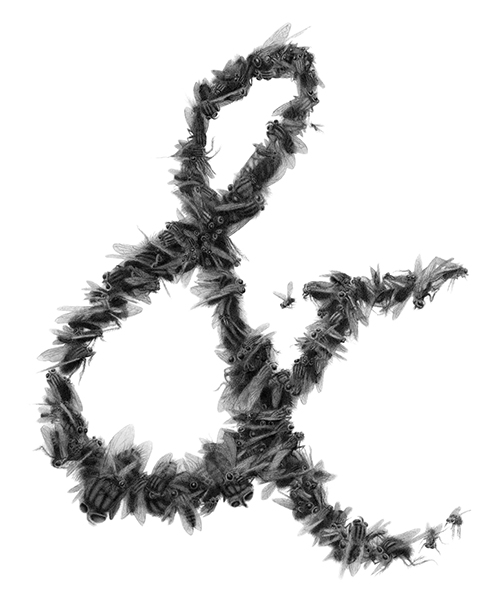January Cover Artist: Armando Veve

Poetry magazine's first cover of 2017 is by Armando Veve, who charmingly introduced himself to us over the summer with the email subject: "Hi! Armando Veve, Illustrator." I was immediately captivated by his meticulous and prolific work. We loved so much of his stuff but got stuck on his densely black "Fly Ampersand." But why flies, you might ask. We wrote to Veve to learn more and he graciously directed us to the author who inspired the work, Evan Calder Williams. Williams writes:
I approached Armando about drawing a map to serve as an atlas, touchstone, and point of departure for a novel I wrote called Escape from Venice. The book is a work of experimental pulp, based off John Carpenter's Escape from New York and concerns the chaotic breakdown of civility and capitalism on Venice when it is turned into a prison island by a neofascist Italian government itching to prove its independence from Europe. In the book, the image of Venice as an ungovernable mass centers on the way that the city is shaped like two interlocking severed snake heads—Don't Tread on Me gone wrong, I suppose—hovering over the blade island of Giudecca, where the actually existing women's prison exists away from the tourist bustle.
The fly ampersand is a figure that appears at the center of Escape from Venice... Specifically, it emerges at the moment when a counter-history of cinema I sketch—one based not on light passing through film but on passing through objects themselves—produces the moment of a group of flies spelling out an ampersand cast huge on the vaulted ceiling of a tremendous underground cinema. In that sequence, and my thinking at the time, the ampersand came to mark something that wasn't equal to "and"—it was a kind of joining that always had a sense of and/or, a messy juncture of incompatibles yoked together at a single moment. In this regard, it was part of my thinking about the grotesque that led me to [Veve's] work (and the thought of joining [his] images to my writing). Since then, I've been writing a new theory and history of the grotesque, one that centers not on the transgressive or monstrous vitality of the body but instances of formal horror and disruption, particularly in thinking about how structures of abstraction and processes of subsumption into world orders and systems are experienced.
It also became a key image in my dialogue/collaboration with China Miéville, especially in our work together on salvage.
For more from Veve himself, check out this recently transcribed studio visit that illuminates his deftly intriguing work. And if you're nearby in New York, you can see him in group shows this month at Jonathan LeVine Gallery, at Harpy Gallery in Rutherford, N.J. in February, and at Nucleus Portland in Portland, O.R. in March.


